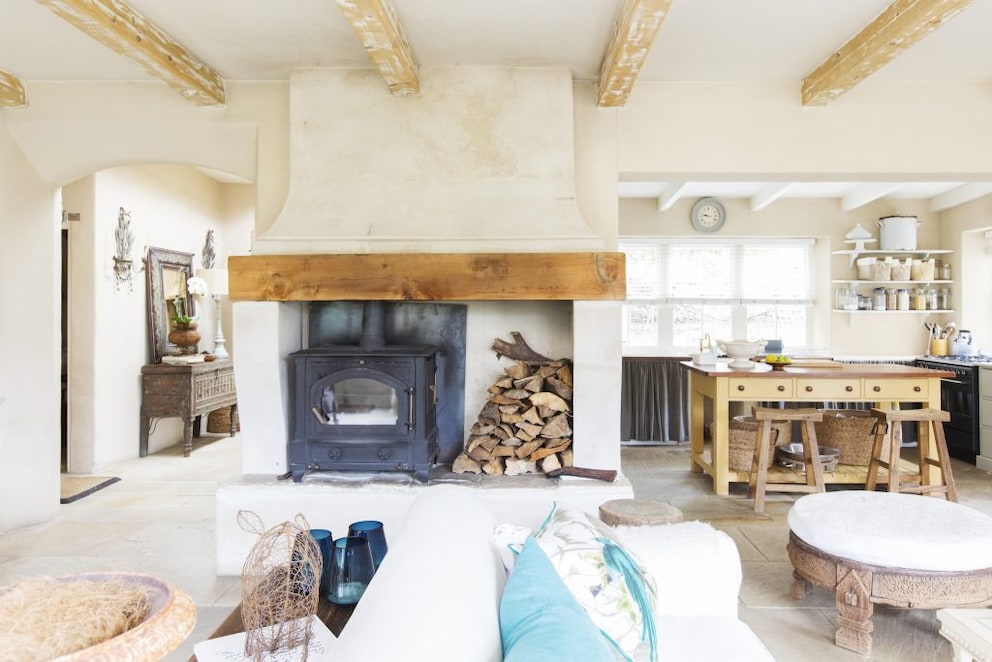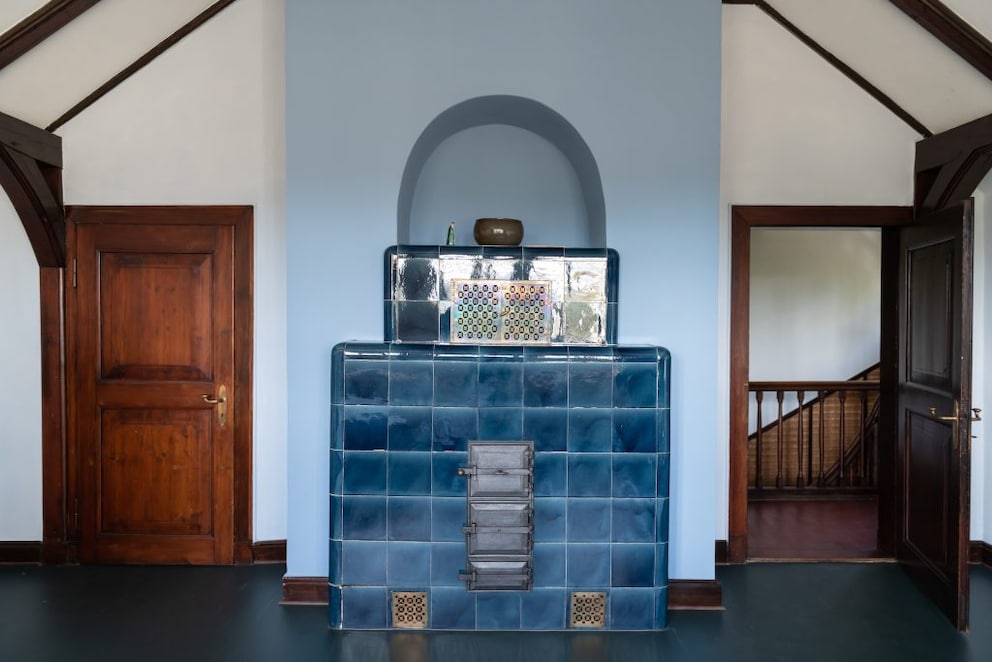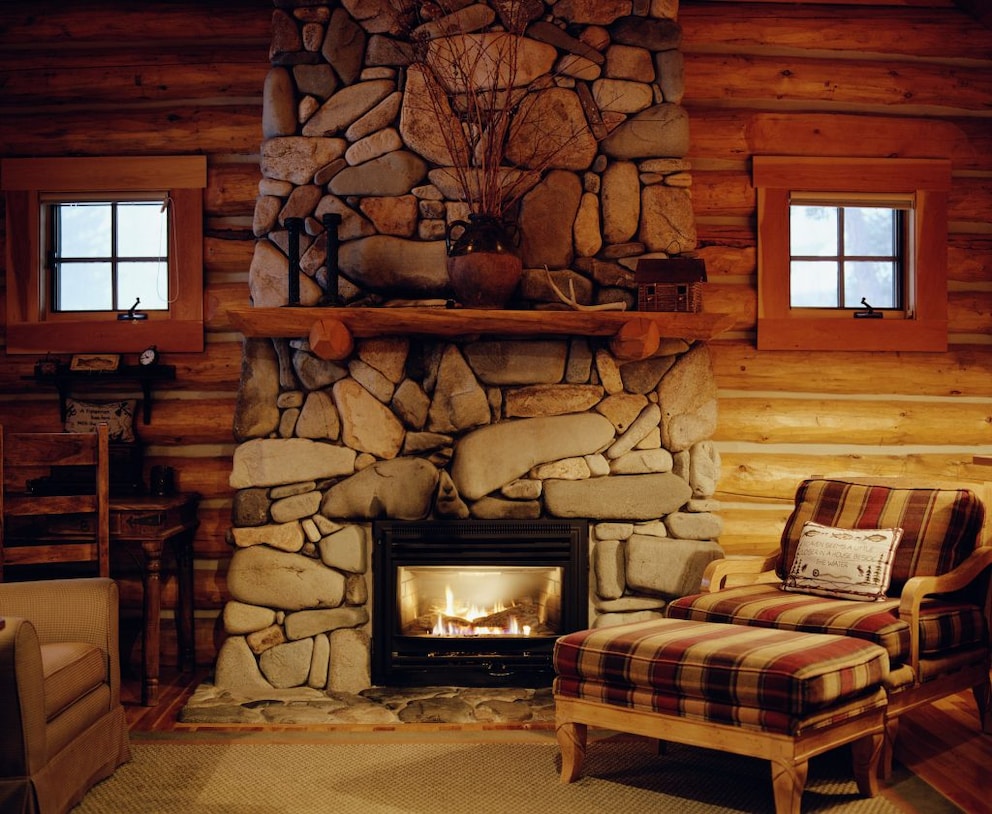October 30, 2019, 7:08 am | Read time: 4 minutes
A stove is more than just a heater—it’s also a piece of furniture. Unfortunately, only a few apartments and houses have a stove or fireplace. Can interested individuals simply have one installed?
A crackling fire in the fireplace creates coziness. The glow of the fire in the dark is calming and can also bring people together. Especially in the fall and winter, many homeowners consider installing such a fireplace in the living room. Experts explain how you can have a stove or fireplace installed at home.
Is it possible to install a fireplace and stove in every house?
A chimney is needed for this. If there is already one in the house, you must ensure it is large enough for the chosen fireplace. “If an old chimney doesn’t fit the new fireplace, there is also the possibility, within certain limits, to adapt the chimney, for example, by inserting a steel pipe into an old masonry chimney,” explains Tim Froitzheim from the Central Association for Sanitation, Heating, and Air Conditioning in Sankt Augustin.
When installing a fireplace or stove, it is important that it matches the cross-section of the chimney and the height is correct. “The required height of the chimney is also determined by the surrounding environment,” explains Alexis Gula from the Federal Association of German Chimney Sweeps.
To protect neighbors from smoke, the exhaust outlet must be at least 15 meters away from their windows or roof structures. “If this is not the case, the chimney must exceed the window or roof structure by at least one meter,” says Gula.
Where in the house should you have a fireplace or stove installed?
A fireplace or stove does not have to be installed directly next to the chimney, but the closer, the better, explains Rolf Heinen from the Association of House, Heating, and Kitchen Technology (HKI) in Frankfurt: “It doesn’t make sense to run the stove pipe across the living room.” That would also be bad for the chimney. “A short distance is not a problem,” adds Gula. This way, stoves can be placed not only directly against the wall but also in the middle of the room.
Also interesting: Why you shouldn’t put firewood from the forest directly into the fireplace
What types of stoves and fireplaces are available?
1. Steel or cast iron stoves
According to HKI, these are the most common heating devices. They have a viewing window that allows you to see the flames. These stoves heat up quickly and warm the room through air currents. They come in many designs, from rustic to timelessly elegant.

2. Tiled stoves
Tiled stoves are more individual. A stove builder constructs them according to the customer’s personal wishes. Typical for these stoves is the combination of a large firebox with a relatively small viewing window, so little heat radiates directly into the room, but a heat storage unit fills up. This way, it releases heat over a long period. Also great: seating areas directly on or near the stove.

3. Heating fireplace
The third variant, the heating fireplace, features a heating insert made of cast iron or steel. It heats well but is also meant to provide the fire experience. Therefore, it has at least one large viewing window so you can enjoy the fire. It is thus the efficient evolution of the open fireplace.


3 Alternatives to Wood-Burning Fireplaces Compared

How to Protect the Floor Around the Fireplace

When an Air-to-Air Heat Pump Is Worthwhile for Heating
Are there health risks from stoves and fireplaces?
“If they are properly installed and operated, they are safe systems,” says Gula. Most rooms are large enough to provide sufficient combustion air. “But the so-called dilution space becomes scarce when the air is also drawn away by other devices such as range hoods, a vented dryer, or controlled residential ventilation.” Here, safety devices are required to step in if necessary–such as window contact switches or differential pressure monitors. Not affected by this are so-called room air-independent fireplaces, which have received certification from the German Institute for Building Technology (DIBt).

